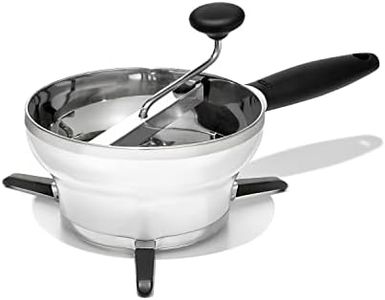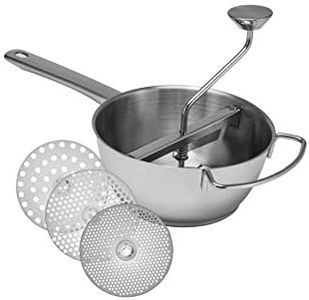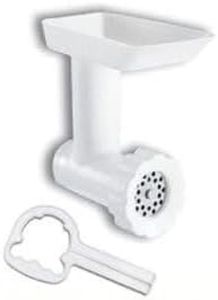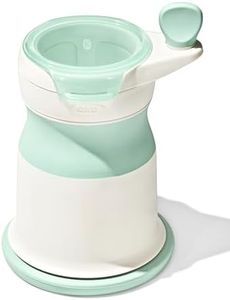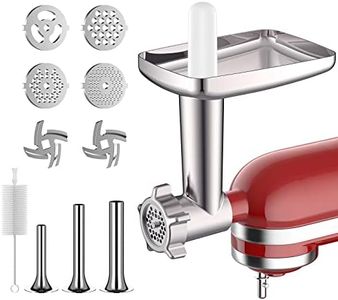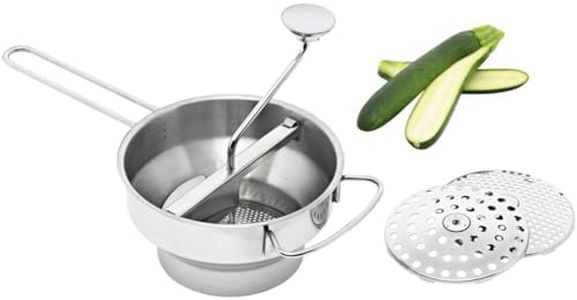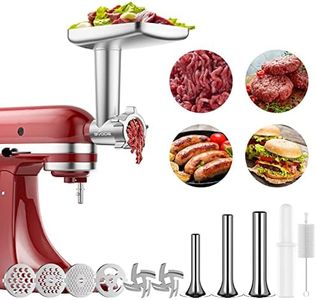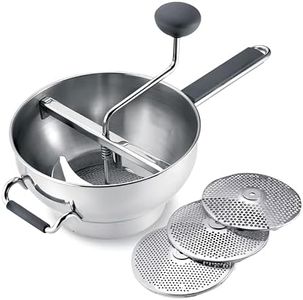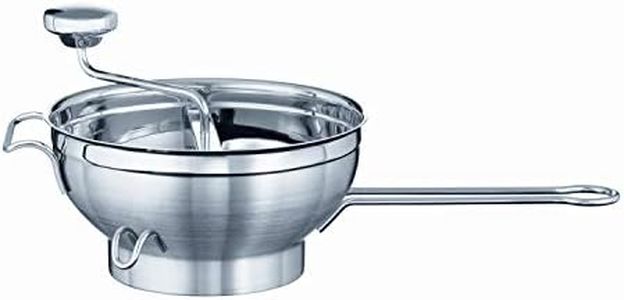We Use CookiesWe use cookies to enhance the security, performance,
functionality and for analytical and promotional activities. By continuing to browse this site you
are agreeing to our privacy policy
10 Best Food Mills
From leading brands and best sellers available on the web.#1
Winner
Buying Guide for the Best Food Mills
Choosing the right food mill can make tasks like making purees, sauces, and baby food much easier in your kitchen. Food mills are handy manual tools that help you mash and strain soft foods without electricity, giving you control over texture and consistency. To find the best fit, it's important to think about how much food you usually prepare, what kinds of ingredients you process, and how easy you want cleanup to be.MaterialThe material of a food mill determines its durability, ease of cleaning, and how it interacts with your food. Common materials are stainless steel, plastic, and sometimes aluminum. Stainless steel is the most robust and resists staining or absorbing odors, making it good for frequent or heavy-duty use. Plastic mills are lightweight and can be easier to handle but may not last as long. Aluminum models are usually lightweight too, but they can react with acidic foods. If you prioritize longevity and plan to process tomatoes or other acidic items often, stainless steel is a solid choice. For occasional or light tasks, plastic may be sufficient.
Bowl CapacityBowl capacity refers to how much food the mill can hold at one time, typically measured in quarts or liters. Small mills (about 1 to 1.5 quarts) suit singles or couples and small-batch tasks. Medium (2 to 2.5 quarts) works for most families, letting you process a fair amount without refilling constantly. Large food mills (above 3 quarts) are best if you regularly process food in big batches, like making sauce for preserving. Consider how much food you typically need to make at once and match the size for less hassle.
Discs/Grinding PlatesFood mills use interchangeable discs or plates with holes of different sizes to control the texture of the final product. Finer discs make smooth purees, while coarser ones produce chunkier results. Some mills include multiple disc sizes, while others come with just one. If you want versatility for everything from baby food to chunky salsas, choose a mill with several disc options. For single-use tasks (like just tomato sauce), a single-disc mill might suffice. Think about the kinds of food you’ll be making most often to decide which range of texture you need.
Ease of Assembly and CleaningA food mill should come apart easily for thorough cleaning since food can get stuck in crevices. Some mills are dishwasher-safe, which saves time, while others require hand washing. Check if the discs can be removed quickly and whether the design has minimal nooks where food can hide. If you dislike washing up, seek out simpler designs or those labeled as dishwasher-safe for less fuss.
Stability and HandlesA stable food mill with comfortable handles is easier and safer to use, especially when processing firmer foods. Some mills have non-slip feet or hooks to rest securely on bowls and pots of various sizes, which prevents slipping and spills. Handles should provide a good grip for turning and holding steady. If you expect to use the mill for long or heavy tasks, prioritizing stability and ergonomic handles will make the job much easier and more comfortable.
